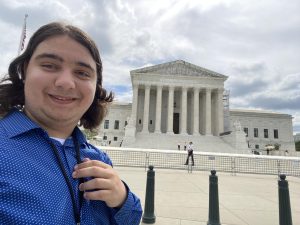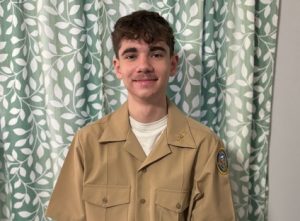New Gun Laws Needed
March 8, 2018
Once a month, our school has a routine fire drill. Students hear an alarm start blaring and are supposed to calmly file out of the classroom, down the hall and outside. Often, students welcome these drills as a break from class to walk out into the warm weather with their friends.
However, the most recent fire drill — a few days after the Parkland school shooting where 17 students were gunned down by a former student with a semi-automatic gun who had lured students out of classrooms by setting off a fire alarm — was anything but routine.
Instead of students’ first reaction being excitement at getting out of class, the primary emotion for many was fear.
“I get scared every time we have one of those drills,” Junior Brendan Hannum said.
This is the new reality for teenagers at high schools across the country today. They are scared about going to school everyday, not sure if they will be safe. This feeling has been slowly but surely building since Columbine nearly two decades ago, and is now at a boiling point. Students’ insecurity is due to legislative inaction, and something must finally be done.
In the short term, the government should give schools money to take immediate action to make them more secure. For one, they can install metal detectors. Many Center City schools already utilize these devices. They can be stationary or wands held by officers. Schools also could increase security by installing bullet proof glass and locks on classroom doors that lock from the inside. This way, in the event of an emergency, teachers would quickly be able to secure students into protected rooms. They also can expand the scanner system teachers use to get into the building to students, so they have to swipe IDs to get into schools.
However, to keep schools from becoming total prison-like environments, we must also try for long-term solutions that get at the root of the gun violence problem.
Other countries, after experiencing mass shootings, have passed legislation that have prevented and lessened the amount of gun violence.
According to pbs.org, after a shooting at a Montreal engineering school, Canada imposed the following:
- 28-day waiting period for gun purchases
- Mandatory safety training courses
- More detailed background checks
- Bans on large-capacity magazines
- Bans or greater restrictions on military-style firearms and ammunition
In Australia, after 35 people were killed in a shooting, nearly two weeks later, the government passed new legislation as well, including:
- All but prohibiting automatic and semi-automatic assault rifles
- Mandating licensing and registration
- Instituting a temporary gun buyback program (took about 650,000 assault weapons out of public circulation)
- Requiring licensees to demonstrate a “genuine need” for a particular type of gun
- Taking a firearm safety course
So what is taking the U.S. so long?
Some fear any action by the government will lead to a total gun ban and therefore violate Second Amendment rights. For those who oppose an overall ban, what’s wrong with changing the age limit from 18 to 21 for purchasing a gun? Also, getting rid of semi-automatic weapons, as Democrats in the House of Representative have proposed, would still allow lawful citizens to own certain guns needed for hunting and self-defense. Tightening background checks and addressing mental illness are also key to ending gun violence.
In a nation where nearly 12 shootings in schools have occurred so far this year, something needs to be done.












